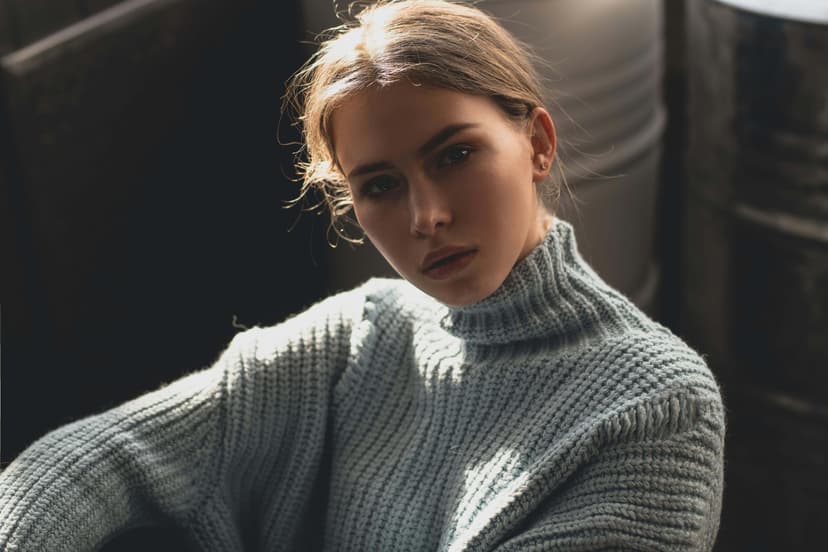The integration of Artificial Intelligence (AI) is fundamentally reshaping the fashion design landscape. Moving beyond hype, 2025 sees sophisticated AI fashion design tools empowering designers and brands to achieve unprecedented levels of efficiency, creativity, and cost-effectiveness. If you’re exploring how AI can revolutionize your workflow, understanding the current tool ecosystem is crucial.
What Is AI in Fashion Design?
AI in fashion design (or AI for fashion design) refers to software powered by artificial intelligence that helps designers create, refine, and visualize fashion concepts. These tools use machine learning and generative AI to turn ideas into tangible designs. Common uses include generating initial design concepts from text descriptions, converting rough sketches into polished visuals, simulating fabric textures, and even creating 3D models for prototyping.
For example, a designer with a vague idea like “lavender sleeveless gown with unique details” can use an AI fashion design generator to turn that text into multiple design options in minutes. This speeds up the early stages of creation, letting designers focus on refining ideas instead of starting from scratch.
How AI is Revolutionizing Fashion Design
AI fashion design tools address core industry challenges:
- Accelerated Concept Generation: Transform text prompts or mood boards into diverse design sketches and variations in seconds.
- Enhanced Visualization & Prototyping: Convert simple sketches into realistic product images or photorealistic on-model visuals, eliminating the need for early-stage physical samples.
- Streamlined Production: Generate technical flats, pattern suggestions, and material visualizations, significantly speeding up the transition from design to production.
- Personalization & Trend Forecasting: Analyze vast datasets (social media, sales, runway) to predict trends and enable hyper-personalized design recommendations.
- Cost Reduction: Drastically cut expenses associated with traditional photoshoots (models, locations, photographers) and physical sampling.
Top 12 AI Fashion Design Tools
The market for AI fashion tools has grown rapidly, with tools tailored to different needs, from idea generation to 3D modeling. Here are 12 leading options:
| Tool | Best For | Category | Skill Level | Key Benefit |
| Fashion Diffusion | Designers, D2C | Creative generation | Low | Fast concept + visuals |
| The New Black | Emerging luxury | Creative branding | Low | Artistic identity |
| Resleeve | D2C, boutiques | AI lookbooks | Low | Fashion shoots |
| CLO 3D | Technical teams | Digital sampling | High | Pattern accuracy |
| Browzwear | Enterprise | 3D production | High | Supply-chain integration |
| Botika | E-comm sellers | AI models | Low | Product imagery |
| YesPlz | Retail platforms | AI shopping UX | Medium | Conversion lift |
| Designovel | R&D, strategy | Trend insight | Medium | Data-driven design |
| Makethedot | Brand ops | Tech packs & collaboration | Medium | Faster specs & workflows |
| Ablo | Small teams | Creative boards | Low | Fast ideation |
| Heuritech | Merch & forecasting | Trend AI | Medium | Demand planning |
| Yoona.ai | Designers & brands | AI fashion design + planning | Low-Medium | Trend-aligned AI design + faster concept-to-market |
1. Fashion Diffusion
🎯 Best For: Brands and designers needing an all-in-one solution for fast design iteration, virtual sampling, and high-quality marketing visuals without photoshoots.
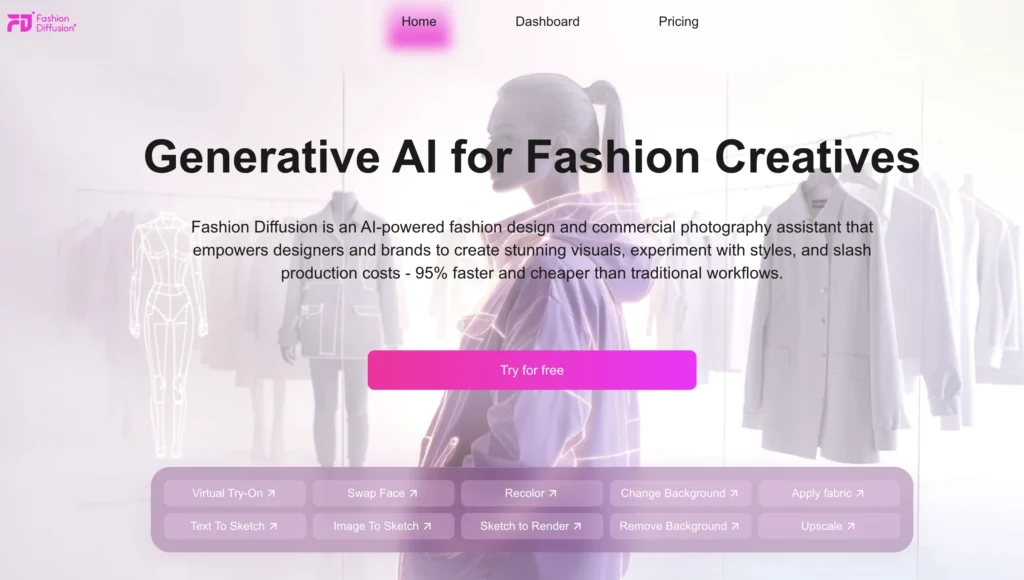
Fashion Diffusion is built specifically for fashion workflows — not generic image generation. It understands silhouettes, draping, textiles, garment structures, and seasonal aesthetics, making it ideal for fast concept iteration and realistic visual output.
Key features include:
- Sketch Enhancement: Turn hand-drawn or digital sketches (Image To Sketch, Sketch to Render) into polished, production-ready visuals instantly.
- Photorealistic Visualization: Generate studio-quality images (Virtual Try-On, Recolor, Change Background, Apply Fabric) without costly photoshoots.
- Creative Exploration: Rapidly iterate on styles, fabrics, and colors directly from initial concepts (Text To Sketch).
- Efficiency: Offers tools like Remove Background and Upscale for quick image editing. Ideal for designers and brands seeking a comprehensive, design-focused platform to cut costs and accelerate time-to-market.
2. The New Black
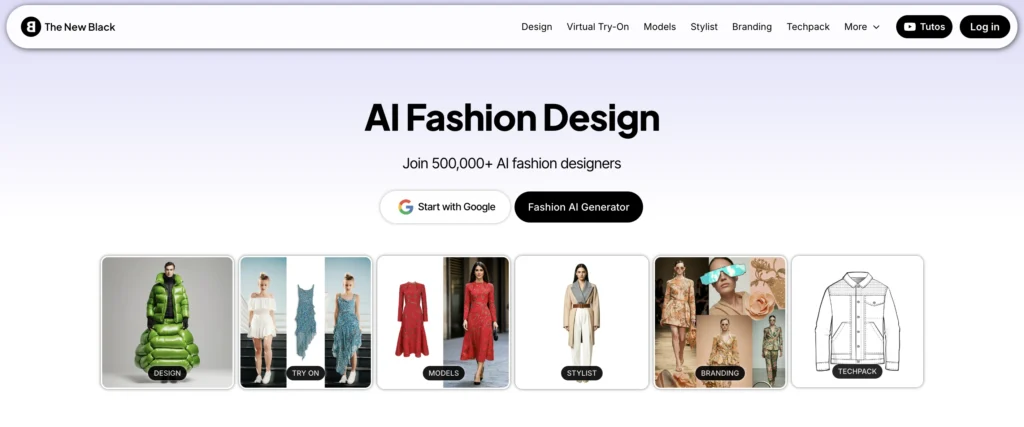
🎯 Best For: Designers seeking rapid concept generation and unique, brand-defining pieces.
The New Black focuses on creative identity and unique visual language. It helps build signature aesthetics and campaign-ready artistic concepts — a strong tool for fashion houses prioritizing storytelling.
Standout strengths:
- Highly stylized creative outputs
- Strong for moodboards and brand identity exploration
- Great for emerging fashion aesthetics & luxury visual direction
3. Resleeve
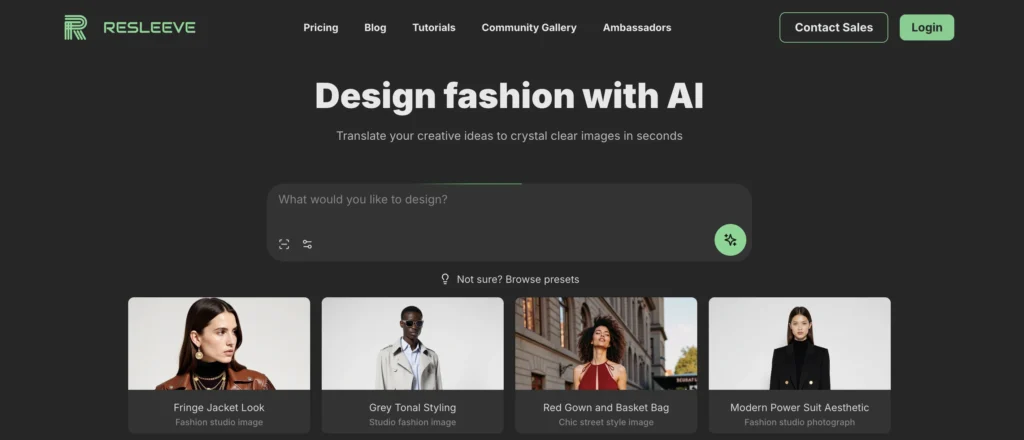
🎯 Best For: Indie designers and brands prioritizing photorealistic quality for marketing, sales, and reducing physical sampling.
Resleeve generates high-fashion editorial visuals aligned to brand style. It accelerates lookbook creation and marketing concepts without requiring full production planning.
Strengths:
- Technical precision: realistic garment simulation, drape, fit, fabric physics.
- Helps reduce physical sampling, improves fit validation early, supports production workflows.
4. CLO 3D
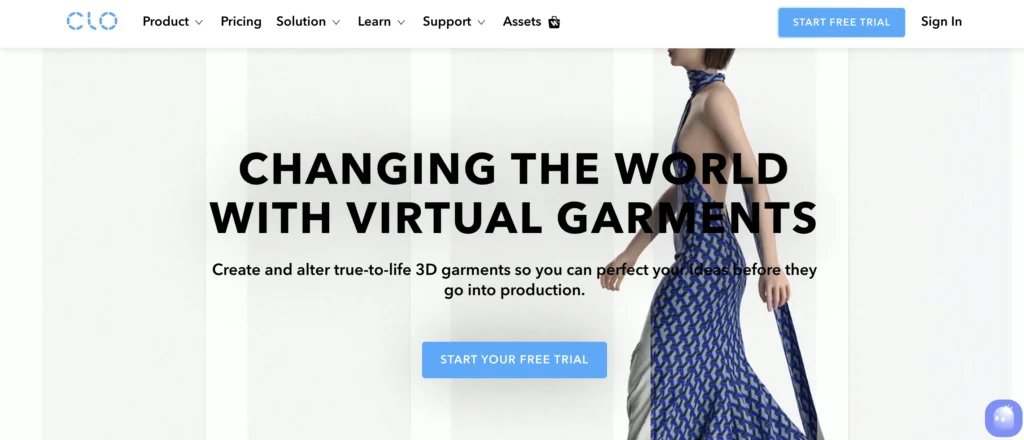
🎯 Best For: Technical designers, pattern makers, and brands focused on perfecting fit, construction, and reducing physical sampling dependency.
CLO is a leading technical 3D fashion tool used by global brands to minimize physical sampling cycles. It supports pattern-accurate garment construction and realistic physics simulation.
Standout strengths:
- True-to-pattern 3D garment development
- Fabric drape simulation, fit evaluation
- Integration with manufacturing pipelines
5. Browzwear
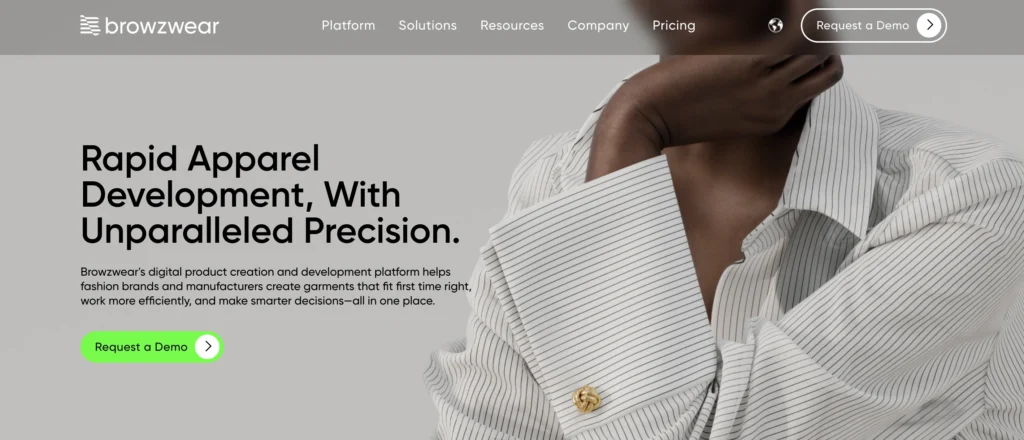
🎯 Best For: Brands requiring a comprehensive 3D solution from design through production and sales.
Browzwear is another powerhouse for 3D fashion design, development, and merchandising. Focuses on accurate fabric behavior, fit, and seamless integration into production workflows.
Strengths:
- End-to-end capability, strong for supply chain, manufacturing integration.
- Helps reduce errors, improve collaboration across global teams, bring digital sampling into production.
6. Botika
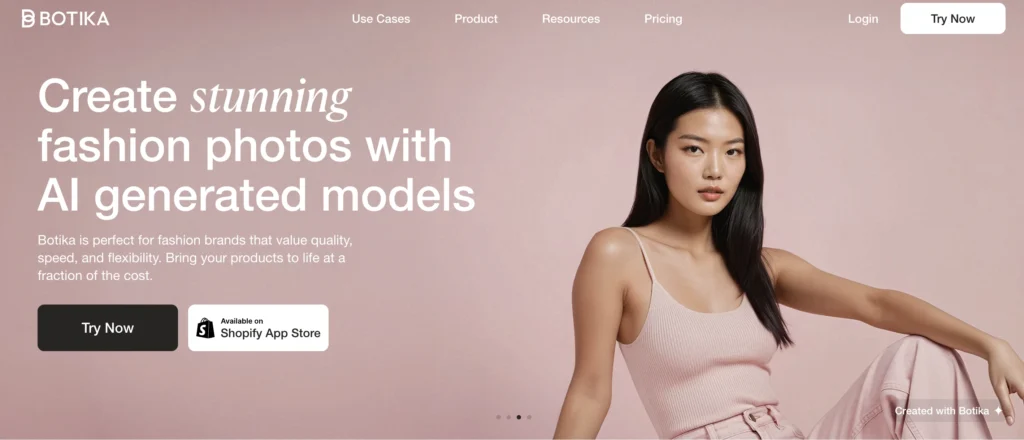
🎯 Best For: Brands with many SKUs, e-commerce-first, need high throughput of product images across sizes/models/poses.
Botika is an AI platform aimed at generating large volumes of on-model or styled apparel visuals at scale—automating imagery which traditionally required photo shoots, model hires, etc.
Strengths:
- Enables large SKU catalogs to have diverse model visuals, variations, backgrounds, etc with less cost/time.
- Useful for e-commerce brands, marketplace sellers.
7. YesPlz
🎯 Best For: Online retailers aiming to boost engagement, reduce returns, and offer superior customer experiences.
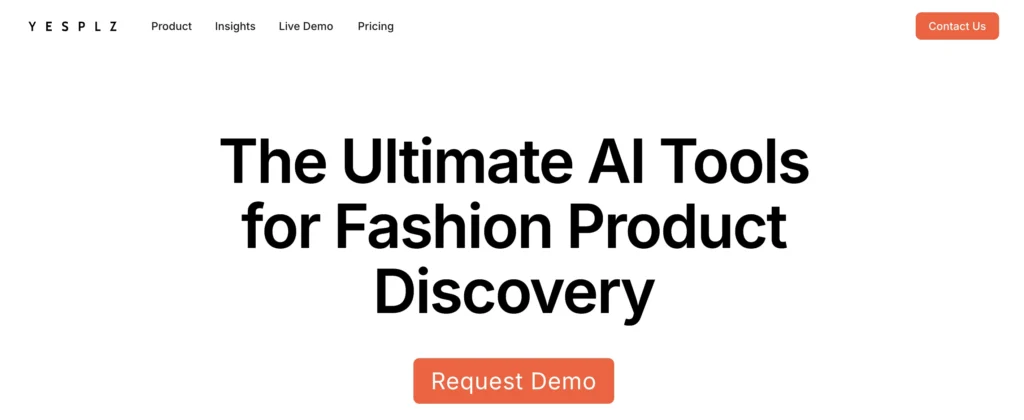
YesPlz is a fashion-focused AI platform designed to help e-commerce brands improve product discovery and shopping experiences. It combines visual understanding, text-based search, and automated fashion tagging to deliver smarter filters, virtual styling, and personalized recommendations.
Strengths:
- Improves user shopping experience, product discovery, may reduce returns, enhance engagement.
- Useful for retail platforms/multi-SKU stores rather than purely design workflows.
8. Designovel
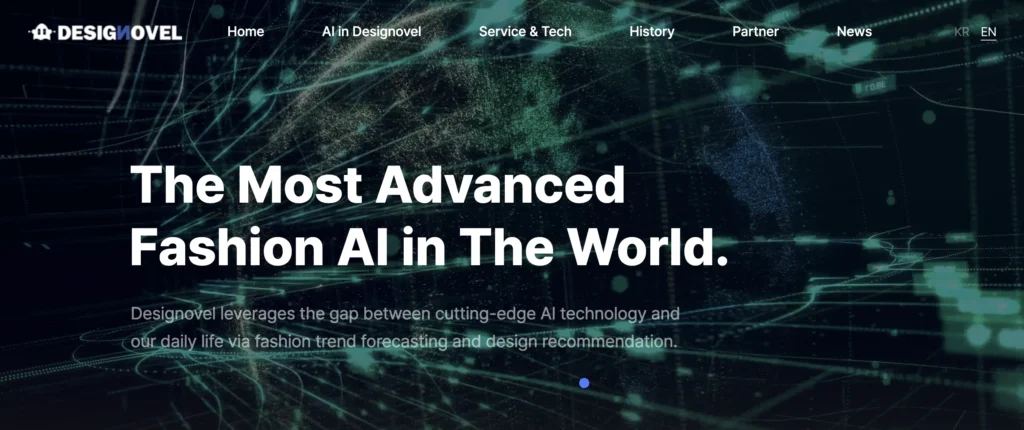
🎯 Best For: Designers and brands seeking data-backed validation for design decisions and staying ahead of trends.
Designovel is an AI solution for design teams focusing on trend analytics, market‐driven design recommendation, combining data collection (on/offline) and AI to guide design decisions.
Strengths:
- Helps designers understand market direction, aligns design strategy to trends/data rather than intuition.
- Suitable for brands that want to use data to reduce risk of mis-aligned design decisions.
9. Makethedot
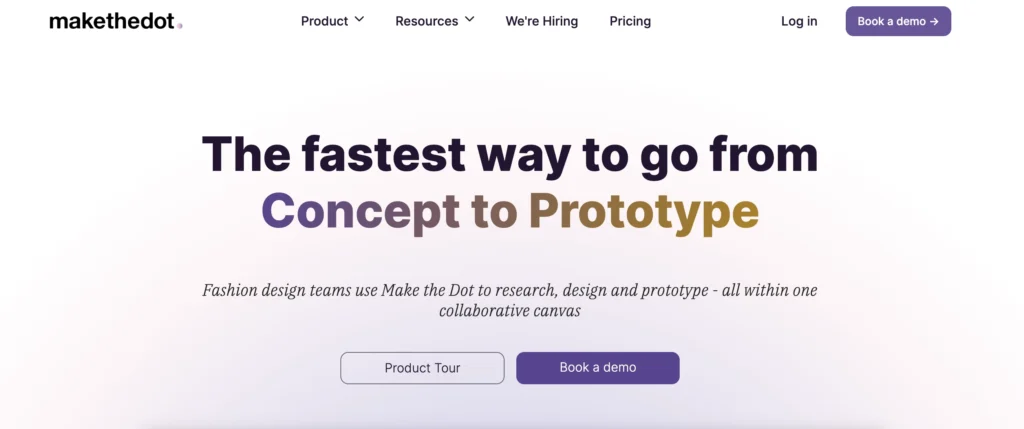
🎯 Best For: Technical designers and production teams looking to increase efficiency and accuracy in pattern making.
Makethedot is an AI-powered design platform for fashion product development teams — assisting from concept/inspiration through digital sample/tech pack handoff and collaboration.
Strengths:
- Enables collaborative workflow: concept boards, inspiration gathering, digital samples, real-time feedback across merchandising/design/development/sales.
- Speeds time-to-market: some case studies show reduced sample cycles and faster design-to-production handoff.
10. Ablo.ai
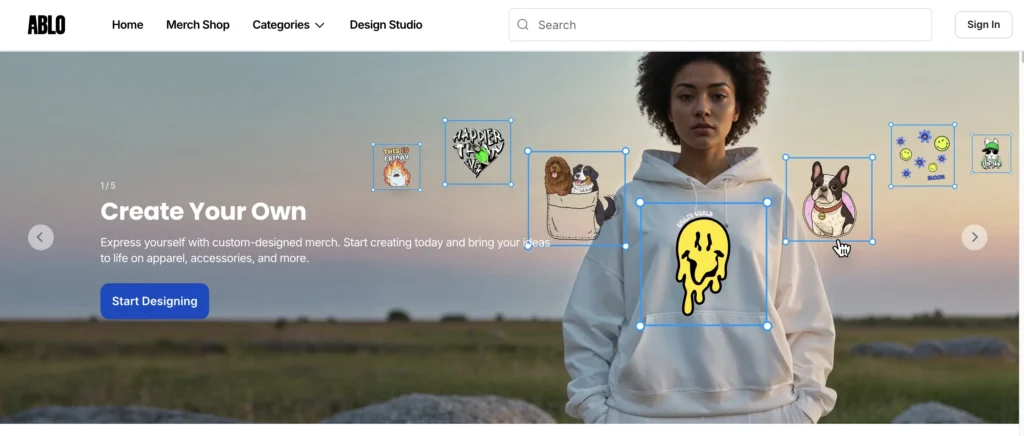
🎯 Best For: Independent designers, startups, and teams focused on collaborative design processes.
Ablo.ai is a collaborative AI fashion design/brand creation tool (less widely cited, but positioned for early-stage brands, design teams).
Strengths:
- Lightweight AI fashion design assistant for creatives
- Fast brainstorming & visual ideation tool
- Supports collaborative brand creation & boards
11. Yoona.ai
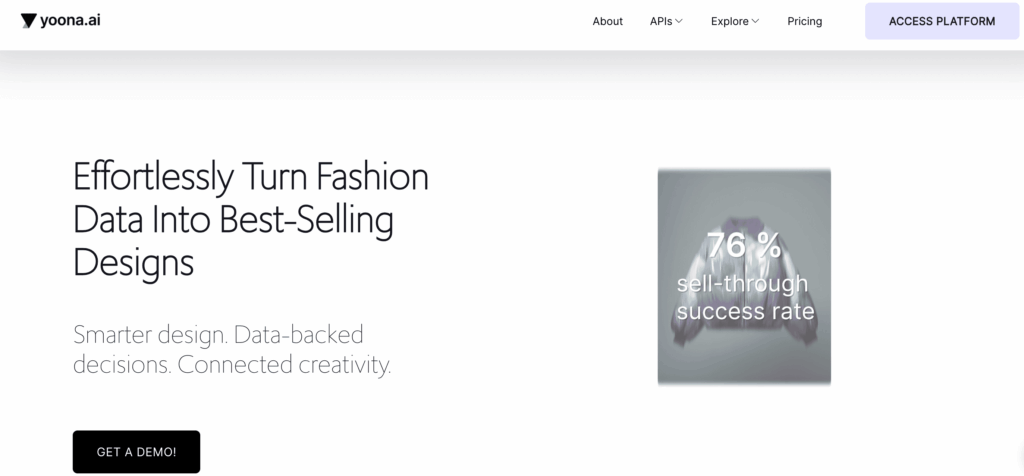
🎯 Best For: Fashion brands and designers who want fast, data-driven AI design generation and trend-aligned product development.
Yoona.ai is an all-in-one AI fashion design platform tailored for designers and brands. It merges generative AI with real-time trend & market data to help fashion teams generate designs, plan collections, and reduce waste.
Strengths:
- Empowers designers by transforming text, sketches or data into fashion-ready designs in minutes.
- Leverages market-trend insights and data-analysis to increase the chances of product success.
- Supports sustainability by reducing wasted samples and speeding up the design-to-market process.
12. Heuritech
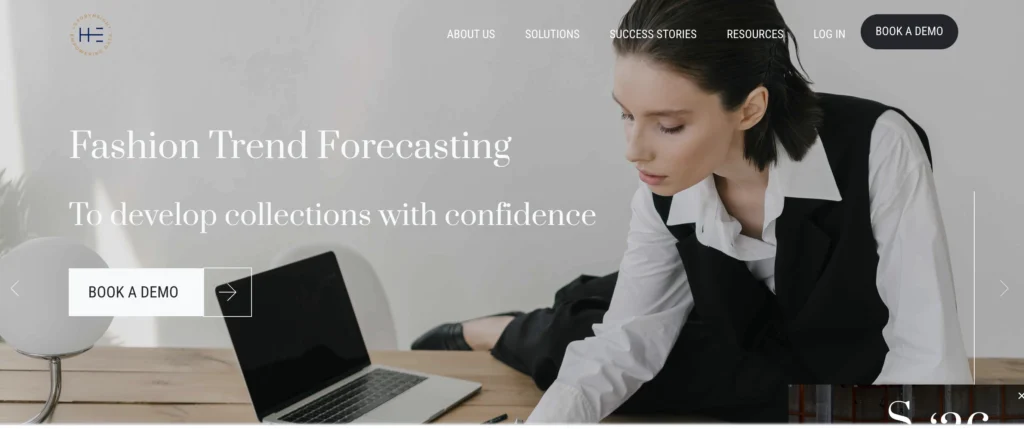
🎯 Best For: Trend departments, designers, and retailers needing deep consumer insights and predictive accuracy.
Heuritech is an AI trend-forecasting and consumer-insight tool for fashion brands: uses image recognition, social-media analysis, extracts signals for trends (colors, prints, silhouettes) ahead of market.
Strengths:
- Computer-vision-based fashion trend forecasting
- Analyzes consumer signals & emerging style patterns
- Helps brands align designs to real market demand
How to Choose the Best AI Tool for Your Needs
Select strategically by evaluating:
- Primary Objective: Precisely define your core need (Concept Generation, 3D Prototyping, Tech Packs, Trend Data, Marketing Imagery, e-Commerce Personalization).
- User Experience: Assess the learning curve. Tools like Fashion Diffusion, Resleeve.ai, and Botika prioritize intuitive interfaces. CLO 3D and Browzwear offer immense power but require deeper investment in learning.
- Integration Capabilities: Check compatibility with your existing ecosystem (Adobe Suite, CAD software, PLM systems like Centric, e-commerce platforms like Shopify or Magento). Seamless data flow is crucial.
- Scalability & Budget: Match tool pricing models (subscriptions, pay-per-use credits, enterprise licensing) to your expected usage volume and financial constraints. Explore free trials/tiers.
The Future of AI in Fashion Design
AI in fashion design is only growing more powerful. As tools like Fashion Diffusion improve, we’ll see more personalized designs, faster production cycles, and a shift toward more sustainable practices. For designers, the key is to embrace these tools as collaborators, using their speed and data to free up time for creative thinking.
Whether you’re an indie designer launching your first collection or a brand looking to stay competitive, the right AI fashion design tool can transform how you work. Start with clear goals, test tools like Fashion Diffusion with your ideas, and see how AI can turn your vision into reality.
Ready to try? Explore Fashion Diffusion today and experience the next step in digital fashion design.
FAQs
AI fashion design uses machine learning models to generate, visualize, and analyze apparel concepts, fabrics, trends, and product images.
Fashion Diffusion’s Sketch to Render tool is specifically designed for this, transforming hand-drawn or digital sketches into polished, production-ready visuals instantly.
Resleeve.ai, Botika, and Fashion Diffusion (via Virtual Try-On/Background tools) are leaders, offering high-quality, diverse, and customizable on-model imagery without photoshoots.
Yes, options exist. Tools like Fashion Diffusion and Resleeve.ai typically offer free trials or limited free credits to test core functionalities. Many provide affordable entry-level plans.
Key applications include: Rapid concept exploration & mood boarding, generating sketches & variations, creating technical flats, simulating fabrics & draping in 3D, virtual prototyping & fit testing, predicting trends, developing marketing visuals (lookbooks, e-commerce images), personalizing customer styling recommendations, and optimizing patterns for sustainability.
No. AI is a transformative augmentation tool. It automates repetitive tasks (sketching variations, grading, basic imagery) and provides data insights, freeing designers to focus on high-level creativity, strategic decision-making, emotional storytelling, and the nuanced cultural understanding that defines true style – areas where human ingenuity remains irreplaceable.



